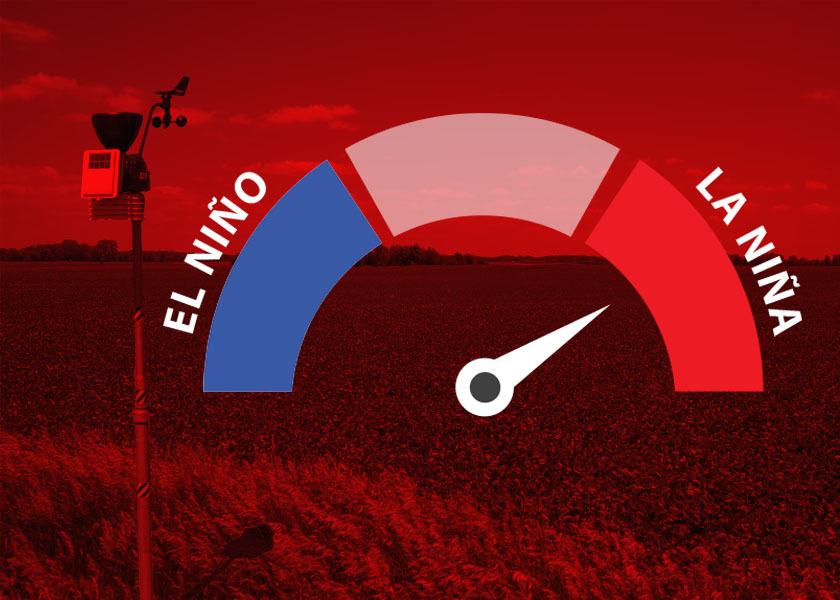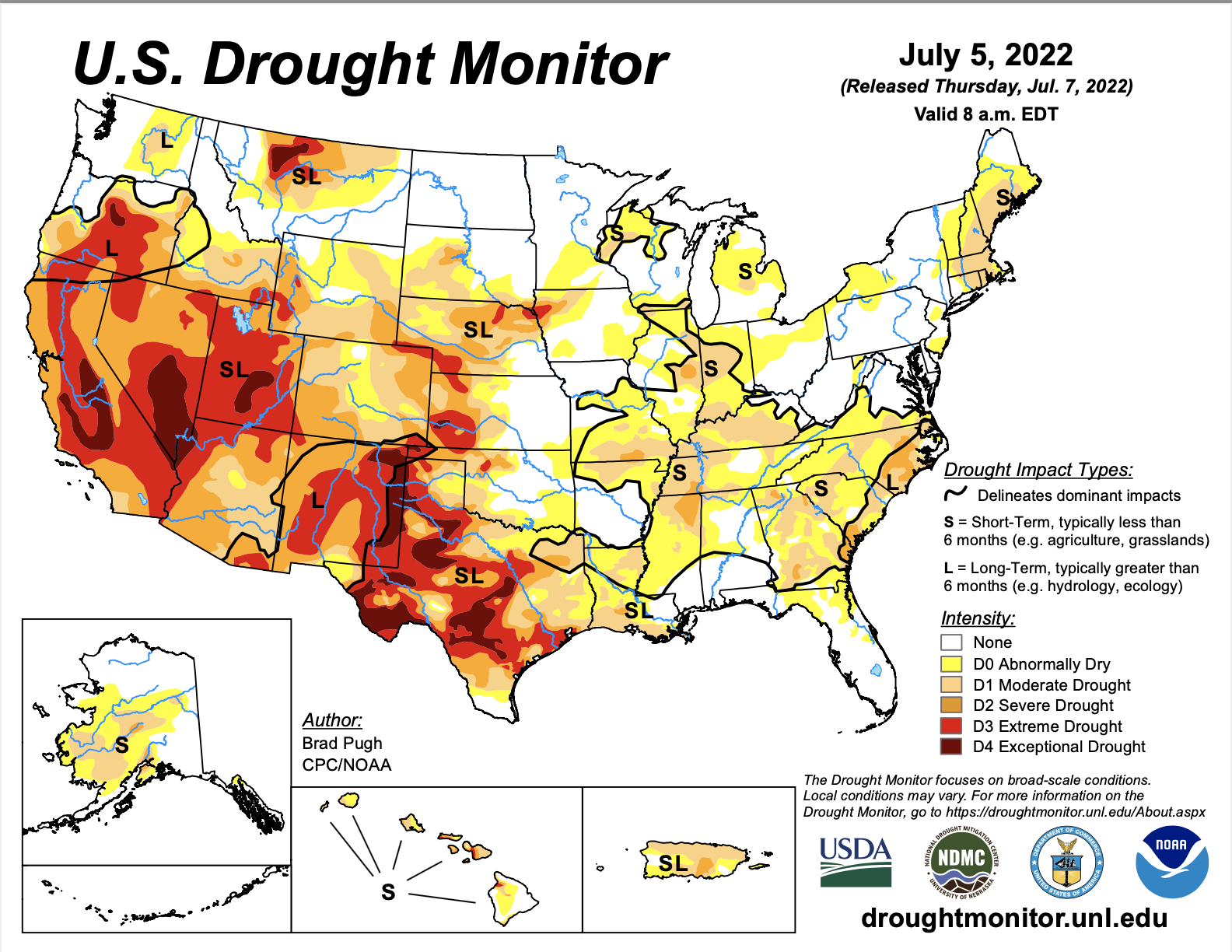What Would a Neutral Weather Pattern Mean for Harvest?

Wild weather hit the Midwest like a brick wall on Tuesday, with the National Weather Service categorizing the storm cell as a derecho due to the reported 90-plus mph winds.
The Midwest is no stranger to this weather phenomenon, as the past two years have produced a derecho at least once per year—a trend that could continue with back-to-back weather patterns, according to meteorologists.
Drought Monitor Summary
The U.S. is currently experiencing a La Niña weather pattern, according to Dennis Todey, USDA Midwest Climate Hub director. He says this pattern has occurred the past two years, with a third year on the horizon.
La Niña generally brings drought conditions, which the U.S. has experienced throughout 2022. As of Tuesday, the U.S. Drought Monitor update from the University of Nebraska-Lincoln (UNL) shows current conditions are shifting across the board.

UNL says heavy rains across the nation may have eased the drought conditions in the short-term, but they won’t be enough for the long run.
Here’s a rundown of the U.S. Drought Monitor changes from June to July in the Midwest:
• East-central Illinois—degraded from moderate drought (D1) to severe drought (D2)
• South-central Missouri—transitioned to short-term D2
• Lower Michigan—now includes abnormal dryness (D0)
• Greater Ohio—moved to D0
• Northwest Wisconsin—greater area of D1
The High Plains maintains a D2 level of drought while most of the West saw some rainfall, which resulted in “drought elimination,” according to UNL. However, some western states like Montana and Wyoming continue to see drought conditions that have escalated into extreme drought (D3).
A Look Ahead
Kirk Hinz, BAMwx.com CEO, says July’s current weather snapshot is important, but August will be pivotal when it comes to crops.
“August seems to be that transitional month where it’s really going to come down to speed—how quickly temps will level out or warm up,” he says. “If we continue to warm up the oceans, like we are right now, there may be cold front risks into August.”
Hinz says to watch whether the heat will stick around the next two to three weeks as those temps will likely stay into August if they are maintained through July.
BAMwx.com predicts the current La Niña will be followed by a neutral weather pattern—neither La Niña nor El Niño.
If the tides shift to a cooler August, Hinz says harvest could be less fruitful than hoped. However, he believes harvest is too far out to make any definitive predictions.
More on weather:
Third Year of La Niña on the Horizon as Drought Continues in the Plains







